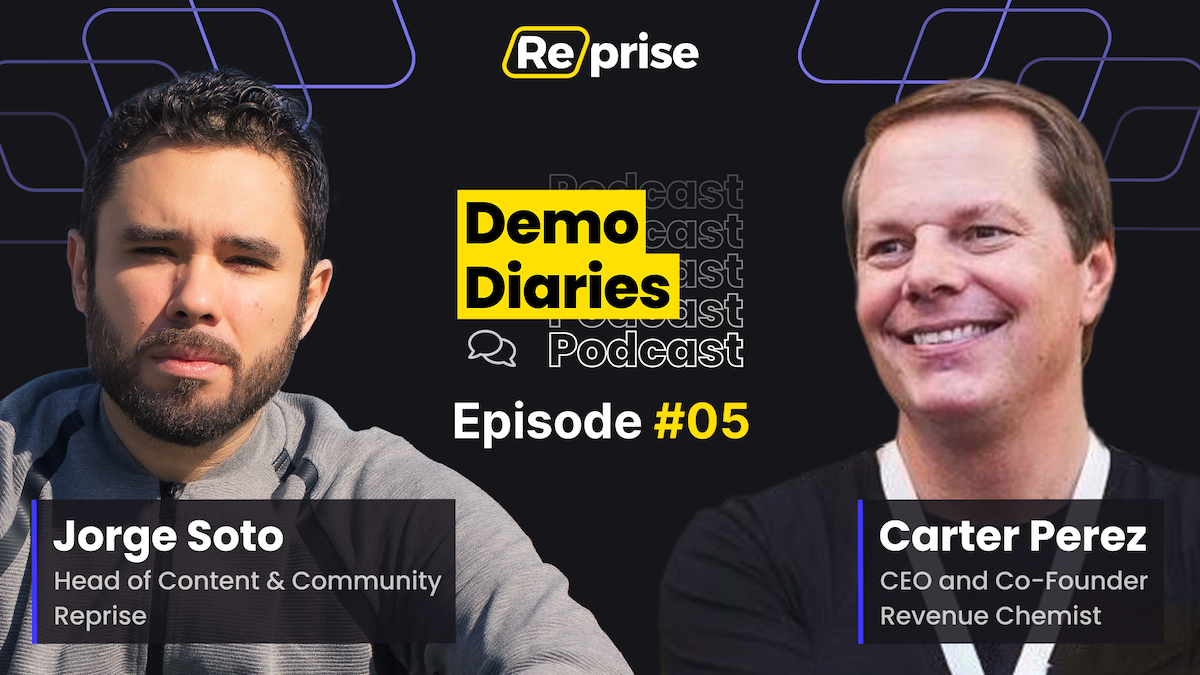It’s time for another recap of the latest episode of our Demo Diaries podcast at Reprise. This one was really informative – I had the pleasure of talking to Carter Perez, CEO at Revenue Chemists, about the toughest and most common challenges when you’re trying to build a great demo to sell your product.
Meet Carter
He began his sales career at Xerox, selling door-to-door all over Manhattan. Getting into sales was all about challenging himself – he took his competitive drive from playing high school and college sports into his sales career. After a few years, he had the chance to get into sales management and scaling and growing businesses, which is now his passion and career at Revenue Chemists.
What your demos should do
Demos are the most important phase of the sales cycle. You’re showing the customer how your product, services, and features match their pain point. It’s public proof that you understand their problems and have a solution to them.
Creating a demo initially can be a painful process. You need to go to the engineering leader, get them to create a demo environment, and keep that environment updated periodically so it’s always relevant and useful. And that’s all a major roadblock, because those engineers need to take time away from creating features for your customers. Keeping the demo up to date is also a challenge when sales doesn’t own the demo and relies on engineering for updates and maintenance.
Best practices for onboarding new reps
Any time you onboard someone, you need to have a demo script with talking points for them. Do a role model demo so they can see it, ask them to study and practice the script, and come back and present it. You can even make a competition out of it, by asking SEs and sales managers to join to grade the demo or review it with the reps and have fun with it.
Make sure you have a framework for demos in place and that you train them on it. Once reps have graduated training, keep reviewing call recordings to track progress. And have them review demos done by tenured reps so they can pick up tips and tricks. Carter makes the demo training process fun with competitions like an international Demo-A-Thon, where the top three demos got to present their demos for the CEO and CTO and the winner was crowned as global champion with a great prize and lots of recognition.
Top tips on improving your demo
Always have an agenda for the demo and always review that agenda with the client before you do the demo. And ask at the end of the agenda review if there’s anything else they’d like to see. This ensures you’re aligned on the discovery process and showing them exactly what they want to see.
And never leave the demo without an agreed-upon next step, time frame, and commitment with the customer. This keeps everyone on the same page and shortens your sales cycle as well.
Watch the full episode here:






